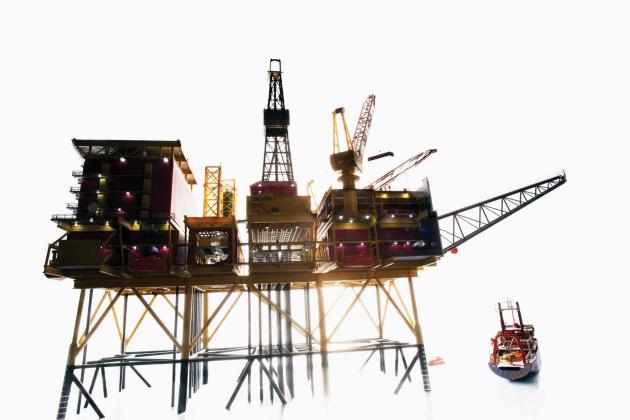
At least one energy market watchdog sees reason for optimism in the offshore drilling industry.
Consistently higher oil prices and greater cost-efficiency in offshore projects are driving increased demand for offshore drilling rigs through 2020, particularly for deepwater projects, according to new analysis from IHS Markit.
The drop in oil prices that began in 2014 created a deep economic dip for Louisiana and St. Mary Parish in particular. The price of West Texas intermediate crude was over $100 a barrel in June 2014 before plunging to below $30 by December 2015.
The price has rebounded to about $70. But the industry’s focus has shifted away from the offshore exploration and production that benefits St. Mary most directly to inland production made possible by directional drilling and hydraulic fracturing, known as fracking.
But its first worldwide mobile rig forecast for 2020, IHS Markit, which relies on data from its Petrodata RigPoint database, estimates the average global demand for mobile offshore drilling units, including jack-ups and floating rigs, is expected to increase by approximately 13 percent between 2018 and 2020 as the offshore market slowly emerges from its prolonged downturn.
IHS Markit expects global offshore rig demand will average 521 units in 2020, which exceeds the average of 453 units expected through 2018. These demand figures account for the entirety of 2018 through 2020, including seasonal fluctuations and regional trends.
“Broadly speaking, much of this increase in global demand can be attributed to the price of oil being sustained at a higher level than when the downturn was in full swing,” said Justin Smith, offshore rig analyst at IHS Markit in a press release.
“In addition, costs associated with the offshore industry have been slashed in recent years. This has led operators to reconsider exploration, appraisal, and development programs that were not economically viable while the market was bottoming-out.”
While the demand for jack-ups, which work in shallow water, will improve during this period, the increase will primarily be driven by floating rigs, specifically semi-submersibles and drillships, as operators step up activity in deepwater areas around the globe, IHS Markit said.
“The vast majority of this offshore rig demand increase will come from the Middle East, led by Saudi Arabia, and other notable additions in Qatar and the United Arab Emirates,” Smith said. “Saudi Aramco alone will account for roughly a third of this increase as the operator continues its push for more offshore production, a sentiment echoed by Qatargas, which is aiming to increase its liquefied natural gas (LNG) exports.”
For jack-ups, demand is expected to climb from an average of 321 rigs this year to an average of 352 in 2020, which would be an improvement of 9.7 percent during the period. Meanwhile, smaller upticks in the jack-up rig segment are expected for several regions, including Northwest Europe, Central America, West Africa and the Indian Ocean. Interestingly, the U.S. Gulf of Mexico has made a considerable rebound from its lowest point of the downturn of four contracted units in October 2016. This year, the U.S. Gulf jack-up sector is expected to average about nine units, increasing to 11 by 2020, with potentially more on top of that, should local operators decide to undertake additional drilling programs, Smith said.
In the floating rig market, average annual semi-submersible rig demand is forecast to increase substantially in the short-term — by more than 25 percent —from an average of 71 units in 2018 to 89 units in 2020. Northwest Europe is responsible for a third of this expected improvement, but it should be noted that the semi-submersibles typically used in the region need to be equipped for harsh environments, for which fewer units are suited, thus making the region more competitive, IHS Markit said.
A significant increase is anticipated for the drillship portion of the floating rig market, for which demand in 2020 will average 79 units, marking a more than 27 percent increase from the average demand of 62 units for 2018. North and South America will be responsible for most of this growth, but for different reasons.
In North America, the increase is mostly attributable to operators being reinvigorated to invest in development programs, while South America is benefiting from ExxonMobil’s exploration successes in Guyana and an influx of new operators in Brazil’s pre-salt areas, IHS Markit said.
Deepwater rigs, which are defined by IHS Markit as units that can operate in more than 3,000 feet of water, will see the most improvement with a number of longer-term programs set to begin in 2019 and to run throughout 2020 and beyond, particularly the drillship segment.
“While fewer rig contracts have been signed during the last several years, we know that operators are making more plans for the future, and that growth is indicated in our forecast,” Smith said.
